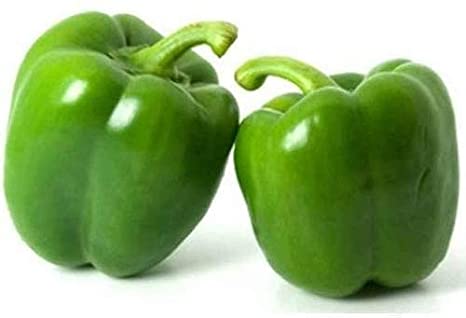The issue of capsicum is also very interesting. It is also known as Pahari Chilli. The special thing is that it is not a product of India, yet how Shimla got associated with this chili.
Let us also tell you that capsicum is not a vegetable. It is actually a fruit, but in India it is mostly used as a vegetable. In terms of properties, capsicum is similar to its color.
It’s ‘shiny’. Not only is it rich in vitamins, it also does not increase cholesterol at all. That’s why its trend has increased a lot nowadays.
Used extensively in continental dishes
Capsicum is easily available in India and is not very expensive, yet it is considered a bit rich, because nowadays its ‘sangam’ has become more with continental dishes. pizza,
Its use has become necessary to add flavor to noodles (chowmein), burgers, paneer tikka, French omelet and many non-veg items. Now apart from green, red and yellow capsicum are also available and it is used a lot in salads. Apart from this, capsicum also shows flamboyance for garnishing.
Capsicum: In addition to green, red and yellow capsicum are also available.
Capsicum is a fruit instead of a vegetable
Capsicum is still considered a vegetable in India and capsicum curry filled with spicy potatoes can make anyone’s mouth water. But actually it is not a vegetable but
According to this, the part that develops from the ovum present in the flower of a plant is called fruit while the part that develops from the root, stem and leaves of the plant is called vegetable. Since capsicum, tomato, etc. come out of the flower, so they are kept in the category of fruits.
Capsicum got its name because of the British.
History books and research show that the origin center of capsicum is South America and the epicenter is Peru, Ecuador and Bolivia. Capsicum is being cultivated in these areas for about 3000 years. The story of why this vegetable was named capsicum in India is that the British who ruled India used to make Shimla the capital in summer. He also brought the seeds of this vegetable with him and in view of the favorable weather and hilly soil of Shimla region, he sowed it there, it grew. Since then it has been named capsicum.
Capsicum has been cultivated for about 3000 years in South America and the epicenter Peru, Ecuador and Bolivia.
It is indeed a ‘new vegetable’ for India, because it is not mentioned in the ancient religious and mythological texts of the country, nor is it mentioned anywhere in the old food and drink of India.
Has antioxidant and no cholesterol at all
Shimla has no answer in terms of qualities. The more brightness and color the vegetable has, the more antioxidants will be in it, as well as such vegetables do not increase cholesterol in the body at all. According to Food Expert and Nutrition Consultant Nilanjana Singh, the compound that makes capsicum spicy is less, so its flavor is not like hot pepper. It also has juice and a little sweetness too. It contains a lot of nutrients like vitamin C, A and beta carotene, but no calories, which does not increase bed cholesterol. Capsicum also keeps weight under control.
These problems can be caused by overeating
He also told that the presence of phytochemicals in capsicum, hence keeps the skin glowing and maintains eyesight. Vitamin C is also in sufficient quantity in it, due to which it prevents cold or other diseases and increases immunity. It is also considered anti-inflammatory. It is also helpful in aching joints of the body. Magnesium, phosphorus, potassium are also found in it. Its disadvantage is that if it is eaten in excess, then there may be a problem of gas in the stomach. Its excessive consumption can cause itching and also dryness. Apart from this, there may also be a problem of runny nose and tears in the eyes for some time.
 Indian Thought Latest News & Views
Indian Thought Latest News & Views



